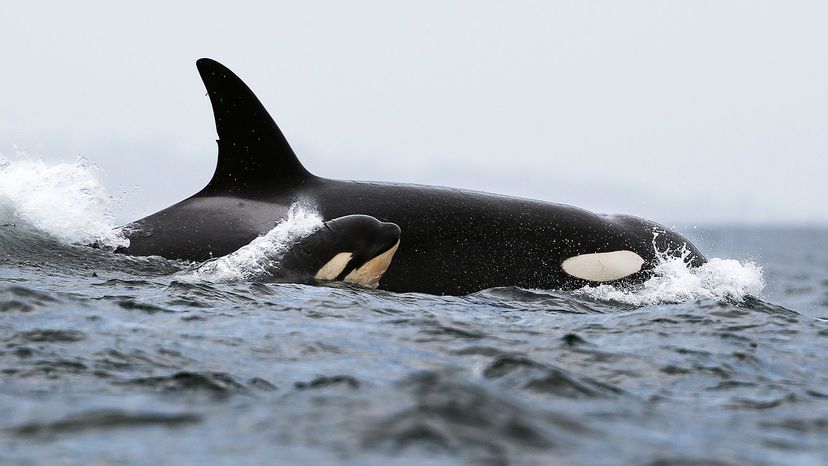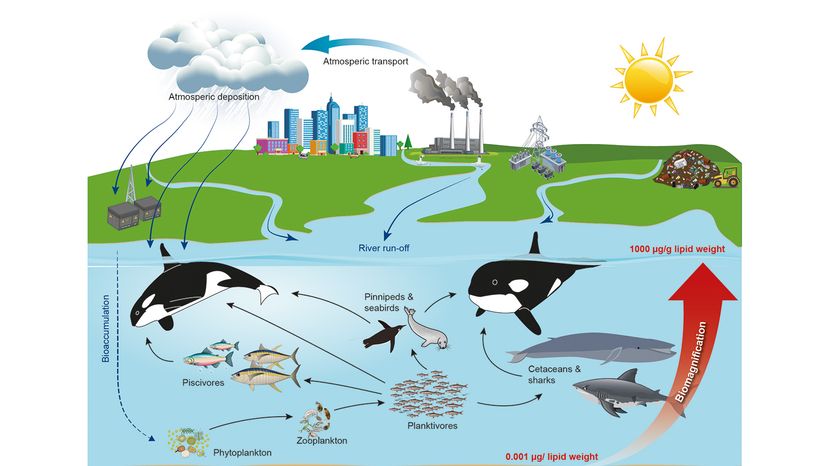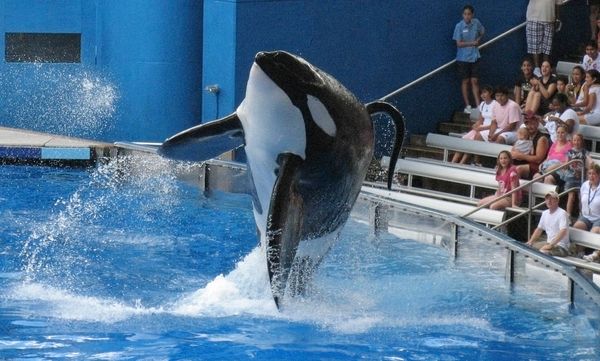
Brace yourselves for bad news: Polychlorinated biphenyls (PCBs) are killing killer whales. Despite the fact that PCBs have been illegal in the United States since 1979, they are still accumulating in the tissues of orcas around the world.
A study published in the Sept. 27, 2018, issue of the journal Science has found that the long-term viability of half the planet's orca population is under threat from PCBs. Researchers at Aarhus University in Denmark, along with scientists at the Zoological Society of London and the University of Copenhagen, used data collected from the blubber of 351 orcas and knowledge of orca tissues and reproductive systems to predict the effect that PCBs would have on population size over the next century. It was not good.
Advertisement
Orcas' fatty tissues can accumulate PCBs when they eat contaminated animals. Since orcas are at the top of the food chain, the PCBs become concentrated in their blubber. Those chemicals can then be passed from the mother to her calf. Areas of the ocean where PCBs are most concentrated — Japan, Brazil, the Strait of Gibraltar and the United Kingdom — could see orca populations completely collapse within 30 to 50 years. Things are a little better in polar regions, where the oceans are less polluted with PCBs.
"We know that PCBs deform the reproductive organs of animals such as polar bears. It was therefore only natural to examine the impact of PCBs on the scarce populations of killer whales around the world," professor Rune Dietz, co-author and initiator of the study, said in a press release. He also works in the Department of Bioscience and Arctic Research Centre at Aarhus University.
Using models and after predicting the effects of PCBs on how many offspring the orcas could have, as well as on their immune systems and mortality rates over 100 years, the researchers determined more than 50 percent of the orca population is in danger.

"The findings are surprising. We see that over half of the studied killer whales populations around the globe are severely affected by PCBs," postdoc Jean-Pierre Desforges from Aarhus University who led the investigations, said in a statement.
This latest round of research confirms (and makes a little worse) what we already knew. A 2007 study also used mathematical models to predict that orcas — "the most PCB-contaminated creatures on Earth," according to American Chemical Society — would experience health risks until at least 2030 and maybe as long as 2063. An earlier study published in 2000 found that "transient" whales in the Pacific Northwest who move a lot and eat more marine mammals, like sea lions, have higher concentrations of PCBs than "resident" populations that eat more fish.
Orcas have 99 problems, of which PCBs are only one. They also have to deal with the noise and pollution from shipping traffic, as well as declining populations of healthy wild salmon. Humans can adjust shipping lanes and eat sustainably harvested salmon to help. The EPA also recommends properly disposing of medicines to keep those chemicals out of the waters and away from wildlife.
Advertisement
